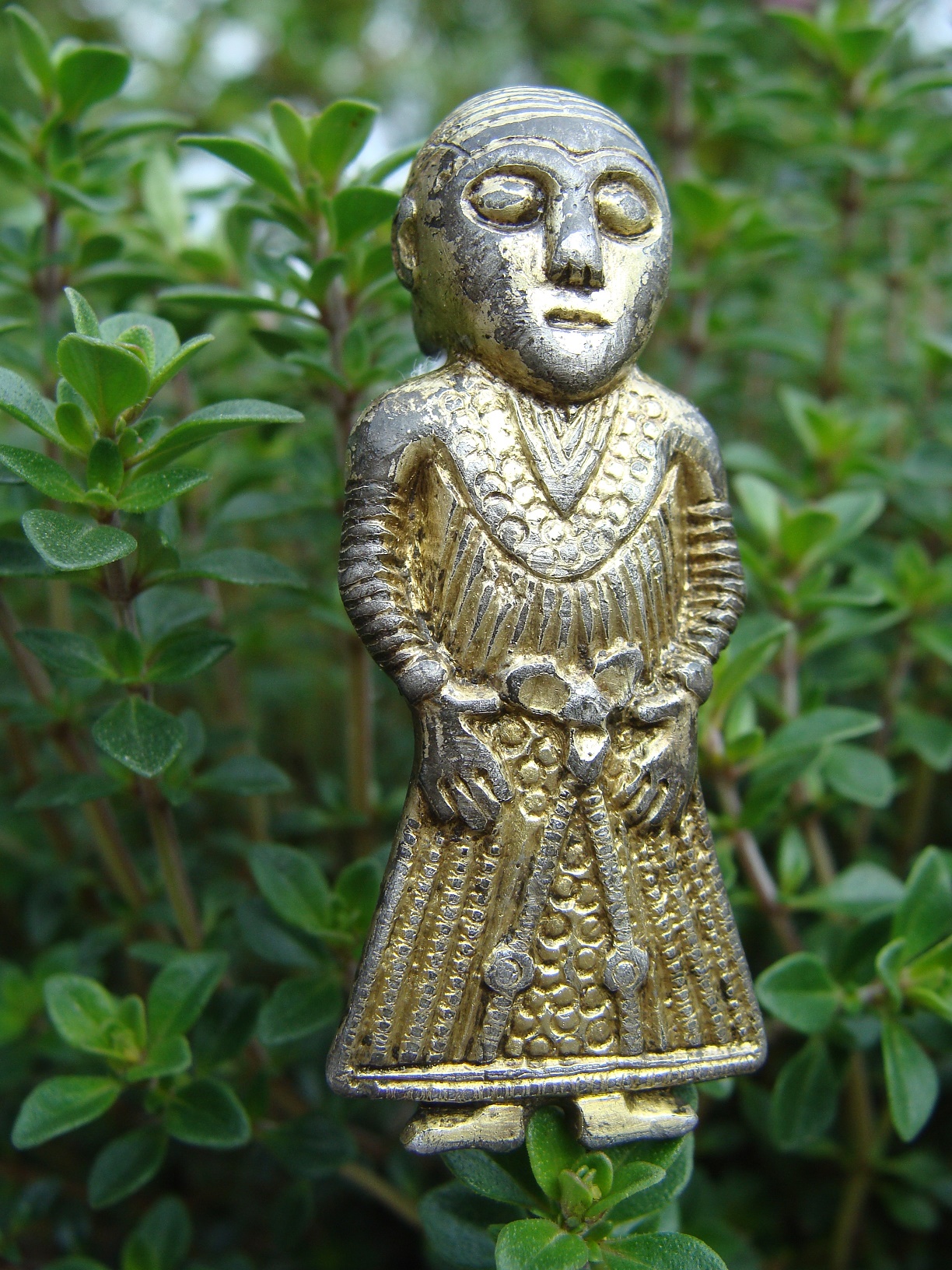The Viking Age can often seem like something from mythology rather than reality – and it can be difficult to imagine how the Viking people actually looked.
The discovery of a small female figurine made of gilded silver by amateur archaeologists in Revninge (Denmark), has given a face and body to the Danish ancestors of the Viking Age.
Dating from around 800AD, archaeologists believe the figurine now named the “Revninge – woman”, may depict the goddess Freya by the hand posture holding the stomach. Other interpretations include the Norns, Diser, vølver or possibly the Valkyries.
” Small humanoid characters from the Viking period are extremely rare and the Revninge – woman’s dress is incredibly detailed. The discovery will no doubt contribute to the discussion on how clothes from this period may be worn.
What is exceptional is the head, which is three dimensional with a two dimensional body, compared to most other figurines which are usually two dimensional in design.” Said Archaeologist Claus Feveile – Department of Landscape & Archaeology at Østfyns Museums.

Figurine Description
The female figurine is 4.6 cm high and made of solid silver gilded with gold. Through the neck there are small holes, which shows the figurine was used as a type of hanging ornament.
The hair is combed back tightly down the back center and assembled into a small knoll. The dress has long sleeves and runs all the way to the feet where each dragtdel has its own design : furrows, pearl ribbon or stamped circles.
Between the hands and around the abdomen she is wearing jewelry that corresponds to the known finds of Viking lobed range. Whereas in contrast, other figurines normally discovered in Viking graves are adorned on the chest.
In 2013 at Hårby a similar three-dimensional Valkyrie figurine was found with characteristics similar to that of the Revninge – woman.
In Norse mythology, a valkyrie (from Old Norse valkyrja “chooser of the slain”) is one of a host of female figures who choose those who may die in battle and those who may live. Selecting among half of those who die in battle (the other half go to the goddess Freyja’s afterlife field Fólkvangr).
Freyja (Old Norse the “Lady”) is a goddess associated with love, sexuality, beauty, fertility, gold, seiðr, war, and death.

Unlike the Valkyrie from Hårby, Revninge – woman carries no weapons, but instead has characteristics that are highly suggestive of fertility. These are indicated by the lobed clamping, jewelry around stomach area and positioning of hands. All interpretive that the figurine may indeed be that of the Norse goddess Freyja.




